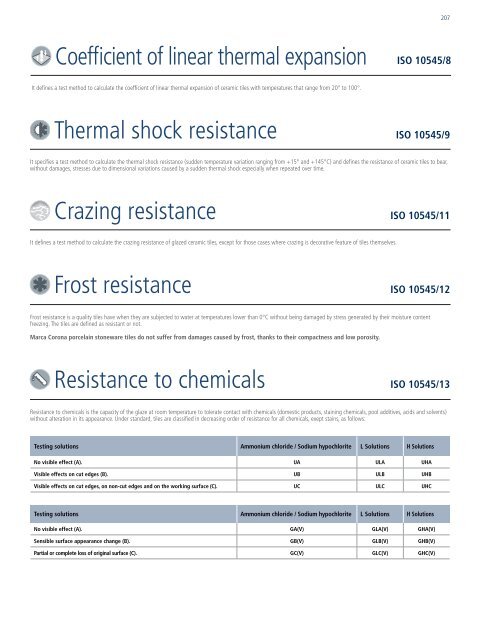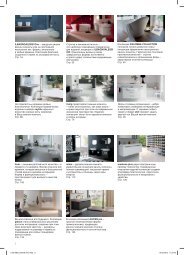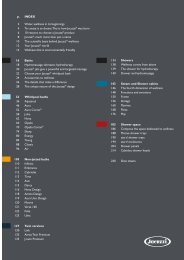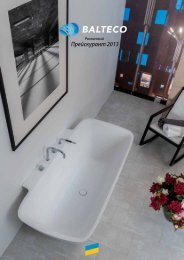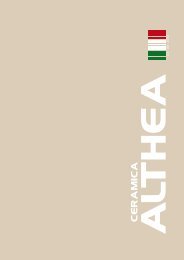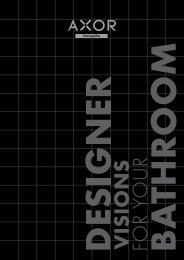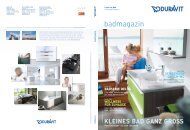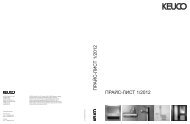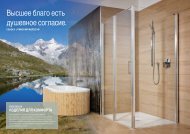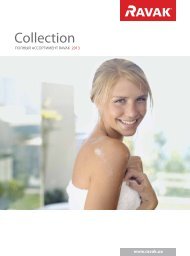Create successful ePaper yourself
Turn your PDF publications into a flip-book with our unique Google optimized e-Paper software.
Coefficient of linear thermal expansion ISO 10545/8<br />
It defines a test method to calculate the coefficient of linear thermal expansion of ceramic tiles with temperatures that range from 20° to 100°.<br />
Thermal shock resistance ISO 10545/9<br />
It specifies a test method to calculate the thermal shock resistance (sudden temperature variation ranging from +15° and +145°C) and defines the resistance of ceramic tiles to bear,<br />
without damages, stresses due to dimensional variations caused by a sudden thermal shock especially when repeated over time.<br />
Crazing resistance ISO 10545/11<br />
It defines a test method to calculate the crazing resistance of glazed ceramic tiles, except for those cases where crazing is decorative feature of tiles themselves.<br />
Frost resistance ISO 10545/12<br />
Frost resistance is a quality tiles have when they are subjected to water at temperatures lower than 0°C without being damaged by stress generated by their moisture content<br />
freezing. The tiles are defined as resistant or not.<br />
<strong>Marca</strong> <strong>Corona</strong> porcelain stoneware tiles do not suffer from damages caused by frost, thanks to their compactness and low porosity.<br />
Resistance to chemicals ISO 10545/13<br />
Resistance to chemicals is the capacity of the glaze at room temperature to tolerate contact with chemicals (domestic products, staining chemicals, pool additives, acids and solvents)<br />
without alteration in its appearance. Under standard, tiles are classified in decreasing order of resistance for all chemicals, exept stains, as follows:<br />
Testing solutions Ammonium chloride / Sodium hypochlorite L Solutions H Solutions<br />
No visible effect (A). UA ULA UHA<br />
Visible effects on cut edges (B). UB ULB UHB<br />
Visible effects on cut edges, on non-cut edges and on the working surface (C). UC ULC UHC<br />
Testing solutions Ammonium chloride / Sodium hypochlorite L Solutions H Solutions<br />
No visible effect (A). GA(V) GLA(V) GHA(V)<br />
Sensible surface appearance change (B). GB(V) GLB(V) GHB(V)<br />
partial or complete loss of original surface (C). GC(V) GLC(V) GHC(V)<br />
207


